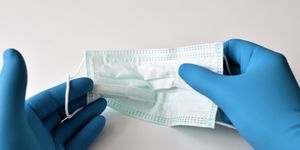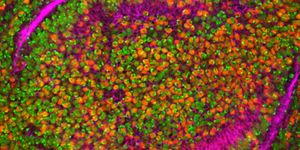Tracking Down Biomarkers for Bladder Cancer Using Mass Spectrometry
Bladder cancer is one of the most common cancers in the world. Non-muscle invasive bladder cancer (NMIBC) is a precursor that, when caught early, can give patients an incredibly favorable prognosis. However, if it advances into malignancy, the prognosis becomes uncertain, and treatments for it are considered some of the most expensive among cancer therapies.
Current diagnostic methods for NMIBC, such as cystoscopy, are invasive, expensive, and may not be able to find NMIBC in its early stages. Biomarker tests are common with many cancers and other diseases, but none of them have outperformed the more invasive methods. A team from a University in Saudi Arabia hypothesized that using Mass Spectrometry (MS) and a type of 2D-gel electrophoresis (2D-DIGE) could reliably use biomarkers to prognose NMIBC patients in a non-invasive way.
Both mass spectrometry and 2D-DIGE are tools used by researchers to separate and identify proteins in a sample. Recent advances have made them more useful outside of the lab, and many studies have begun trying to use them for diagnostic purposes. In theory, both methods combined could identify a profile of proteins for NMIBC patients versus healthy volunteers. This profile could then be applied to other patients, and feasibly diagnose bladder cancer.
They began by gathering blood samples from NMIBC positive patients and healthy volunteers. Using both methods, they identified three markers that were consistently changed in NMIBC samples versus healthy samples. The three markers were haptoglobin, ceruloplasmin, and complement component C6.
An in-depth literature search found studies linking all three markers were linked to bladder cancer. The team then tested the three-biomarker profile on another set of NMIBC and healthy patients. Haptoglobin was the most successful at diagnosing NMIBC patients. Ceruloplasmin and C6 were less so, but still mildly successful. In particular, ceruloplasmin had a unique change, but the team did not go beyond taking note of it in this study.
Biomarkers are the future of diagnostic tests for many diseases. They are non-invasive and could go as far as predicting a patient’s ten-year prognosis. For bladder cancer, most biomarker-based tests have yet to be successful enough to replace older methods. This study takes another step towards creating a practical biomarker test for bladder cancer and catching NMIBC before it becomes a problem.
The team concludes, “We believe that differential plasma proteome analysis of patients with low grade BC provides new insights on disease pathophysiology. The current study sheds the light on new plasma marker proteins that could potentially help in early detection of bladder cancer.”
Sources: Nature Scientific Reports, OncLive TV









